Muhammad Zeeshan Arshad
Structure-from-Sherds++: Robust Incremental 3D Reassembly of Axially Symmetric Pots from Unordered and Mixed Fragment Collections
Feb 19, 2025Abstract:Reassembling multiple axially symmetric pots from fragmentary sherds is crucial for cultural heritage preservation, yet it poses significant challenges due to thin and sharp fracture surfaces that generate numerous false positive matches and hinder large-scale puzzle solving. Existing global approaches, which optimize all potential fragment pairs simultaneously or data-driven models, are prone to local minima and face scalability issues when multiple pots are intermixed. Motivated by Structure-from-Motion (SfM) for 3D reconstruction from multiple images, we propose an efficient reassembly method for axially symmetric pots based on iterative registration of one sherd at a time, called Structure-from-Sherds++ (SfS++). Our method extends beyond simple replication of incremental SfM and leverages multi-graph beam search to explore multiple registration paths. This allows us to effectively filter out indistinguishable false matches and simultaneously reconstruct multiple pots without requiring prior information such as base or the number of mixed objects. Our approach achieves 87% reassembly accuracy on a dataset of 142 real fragments from 10 different pots, outperforming other methods in handling complex fracture patterns with mixed datasets and achieving state-of-the-art performance. Code and results can be found in our project page https://sj-yoo.info/sfs/.
Gait Events Prediction using Hybrid CNN-RNN-based Deep Learning models through a Single Waist-worn Wearable Sensor
Feb 28, 2022



Abstract:Elderly gait is a source of rich information about their physical and mental health condition. As an alternative to the multiple sensors on the lower body parts, a single sensor on the pelvis has a positional advantage and an abundance of information acquirable. This study aimed to explore a way of improving the accuracy of gait event detection in the elderly using a single sensor on the waist and deep learning models. Data was gathered from elderly subjects equipped with three IMU sensors while they walked. The input was taken only from the waist sensor was used to train 16 deep-learning models including CNN, RNN, and CNN-RNN hybrid with or without the Bidirectional and Attention mechanism. The groundtruth was extracted from foot IMU sensors. Fairly high accuracy of 99.73% and 93.89% was achieved by the CNN-BiGRU-Att model at the tolerance window of $\pm$6TS ($\pm$6ms) and $\pm$1TS ($\pm$1ms) respectively. Advancing from the previous studies exploring gait event detection, the model showed a great improvement in terms of its prediction error having an MAE of 6.239ms and 5.24ms for HS and TO events respectively at the tolerance window of $\pm$1TS. The results showed that the use of CNN-RNN hybrid models with Attention and Bidirectional mechanisms is promising for accurate gait event detection using a single waist sensor. The study can contribute to reducing the burden of gait detection and increase its applicability in future wearable devices that can be used for remote health monitoring (RHM) or diagnosis based thereon.
Gait-based Frailty Assessment using Image Representation of IMU Signals and Deep CNN
Oct 15, 2021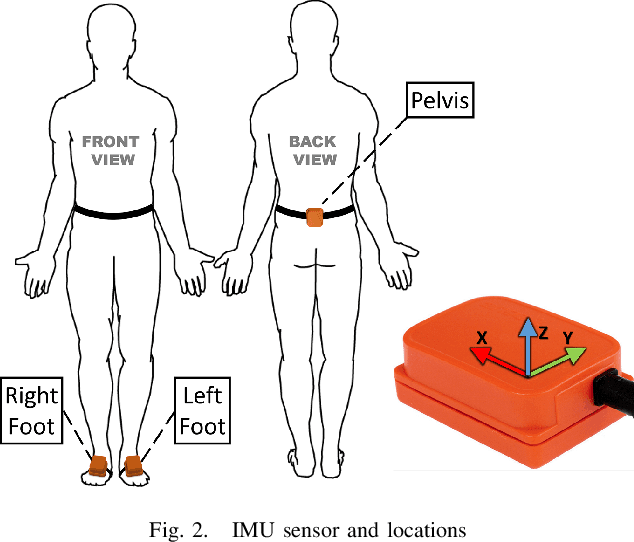
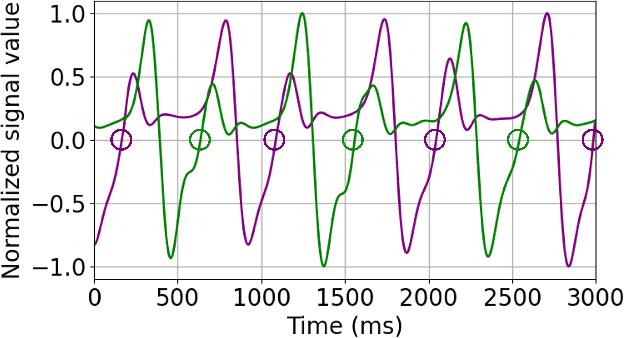
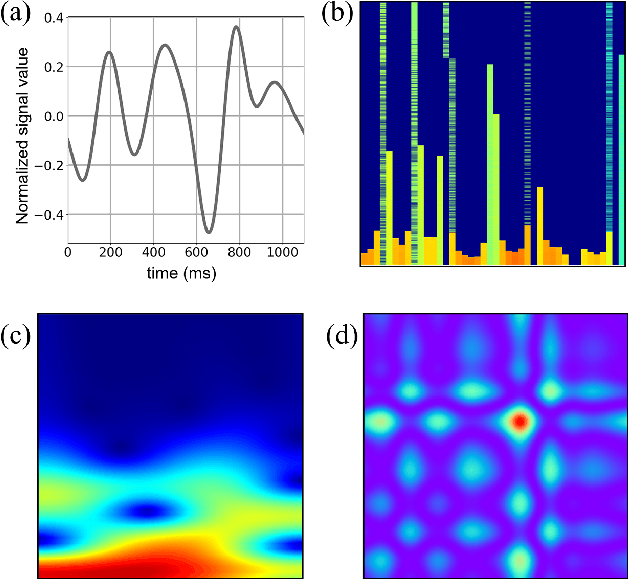
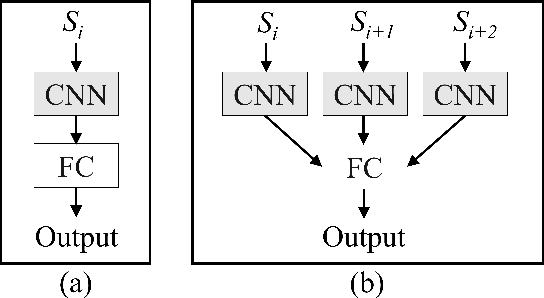
Abstract:Frailty is a common and critical condition in elderly adults, which may lead to further deterioration of health. However, difficulties and complexities exist in traditional frailty assessments based on activity-related questionnaires. These can be overcome by monitoring the effects of frailty on the gait. In this paper, it is shown that by encoding gait signals as images, deep learning-based models can be utilized for the classification of gait type. Two deep learning models (a) SS-CNN, based on single stride input images, and (b) MS-CNN, based on 3 consecutive strides were proposed. It was shown that MS-CNN performs best with an accuracy of 85.1\%, while SS-CNN achieved an accuracy of 77.3\%. This is because MS-CNN can observe more features corresponding to stride-to-stride variations which is one of the key symptoms of frailty. Gait signals were encoded as images using STFT, CWT, and GAF. While the MS-CNN model using GAF images achieved the best overall accuracy and precision, CWT has a slightly better recall. This study demonstrates how image encoded gait data can be used to exploit the full potential of deep learning CNN models for the assessment of frailty.
Gait-based Human Identification through Minimum Gait-phases and Sensors
Oct 15, 2021
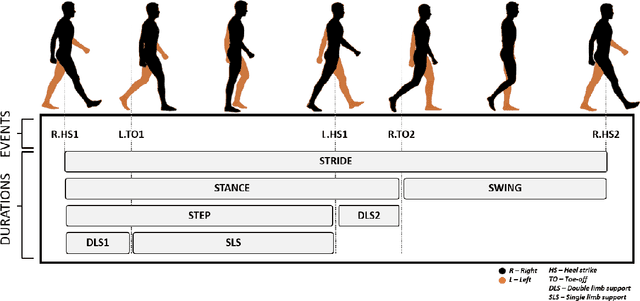
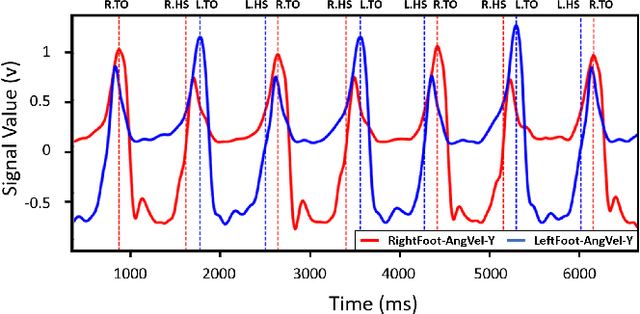
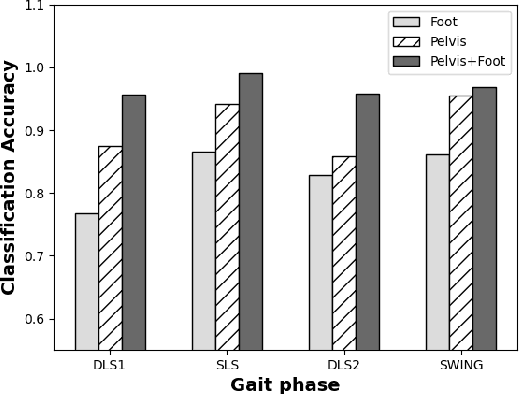
Abstract:Human identification is one of the most common and critical tasks for condition monitoring, human-machine interaction, and providing assistive services in smart environments. Recently, human gait has gained new attention as a biometric for identification to achieve contactless identification from a distance robust to physical appearances. However, an important aspect of gait identification through wearables and image-based systems alike is accurate identification when limited information is available, for example, when only a fraction of the whole gait cycle or only a part of the subject body is visible. In this paper, we present a gait identification technique based on temporal and descriptive statistic parameters of different gait phases as the features and we investigate the performance of using only single gait phases for the identification task using a minimum number of sensors. It was shown that it is possible to achieve high accuracy of over 95.5 percent by monitoring a single phase of the whole gait cycle through only a single sensor. It was also shown that the proposed methodology could be used to achieve 100 percent identification accuracy when the whole gait cycle was monitored through pelvis and foot sensors combined. The ANN was found to be more robust to fewer data features compared to SVM and was concluded as the best machine algorithm for the purpose.
 Add to Chrome
Add to Chrome Add to Firefox
Add to Firefox Add to Edge
Add to Edge